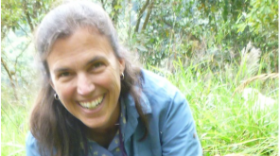-
Those struggling with nonmedical opioid use and their families often face stigmatization. Researchers at Utah State University are working to understand how family members cope with stigma, to better inform practitioners on how to support them.
-
A new study from researchers at Utah State University surveyed coastal planners across the globe, in nine different languages, to understand the use of sea level rise science in local policy and plans .
-
This month’s USU Ecology Center speaker will explore the intricacies of bird migration, and how little we know about it.
-
Despite being the majority of USU students, women make up only one in three students in the College of Science. The university's Science Council is working on supporting these women.
-
The Great Salt Lake Strike Team, a group of researchers and state officials, announced findings and policy suggestions in a new report at this month’s Kem C. Gardner Newsmaker Breakfast.
-
November’s USU Ecology Center seminars cover the growing popularity of tree planting to offset carbon emissions and new methods to restore forest ecosystems.
-
Chemical contaminants can travel long distances through the Earth’s atmosphere to remote ecosystems. Chemist Kimberly Hageman explains how pollutants from our human activities spread to the mountains, as well as to faraway places like Arctic Lakes.
-
We explore a cautionary tale about our beloved Great Salt Lake with insights from a researcher at Utah State University who visited Lake Aculeo in Chile.
-
Utah State University’s Space Dynamics Laboratory has completed the building and testing of a small satellite. Along with five other ones, it will monitor the Sun’s radio waves and glean new information about the Sun’s famous, and mysterious, coronal mass ejections.
-
Esports, or competitive gaming, is gaining popularity as a spectator sport, and college sports programs are taking notice. USU is taking this opportunity to combine esports and academics through an expanding undergraduate curriculum and growing competitive esports club.

Play Live Radio
Next Up:
0:00
0:00
Available On Air Stations










